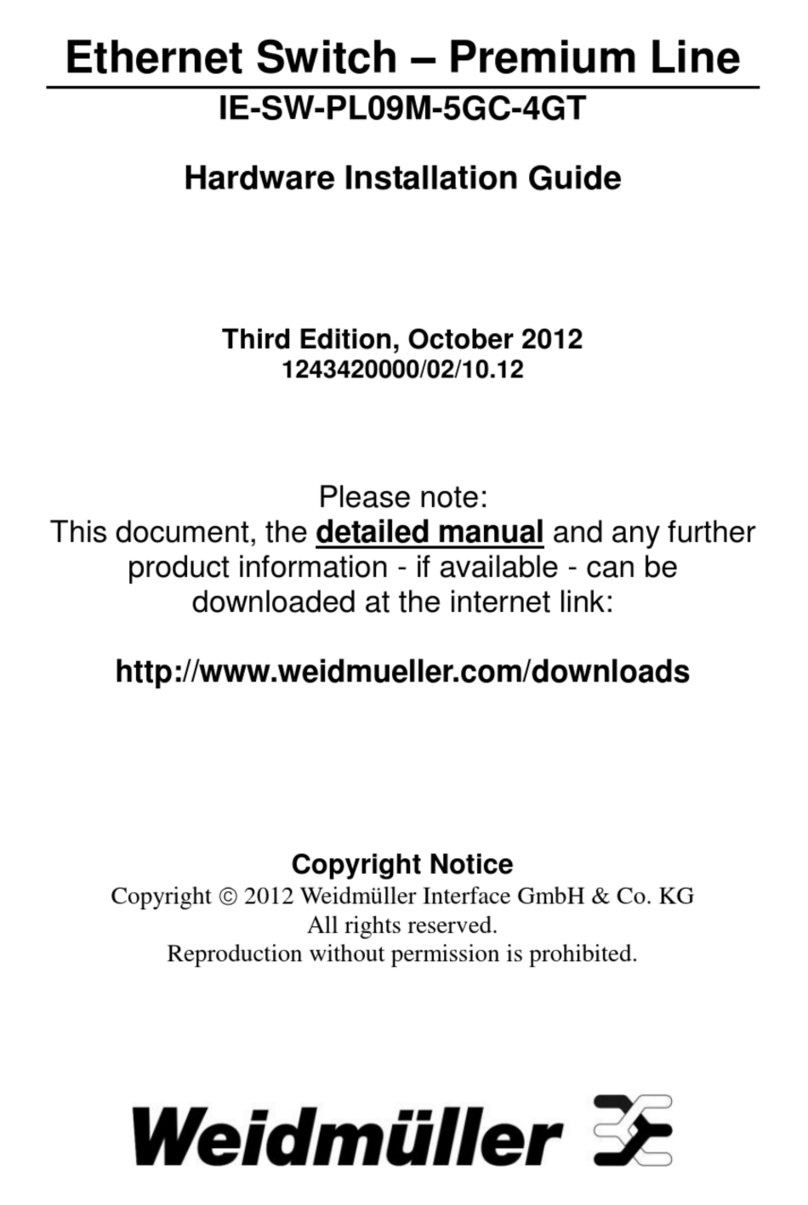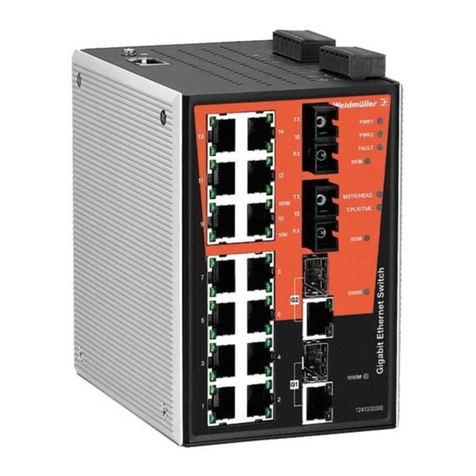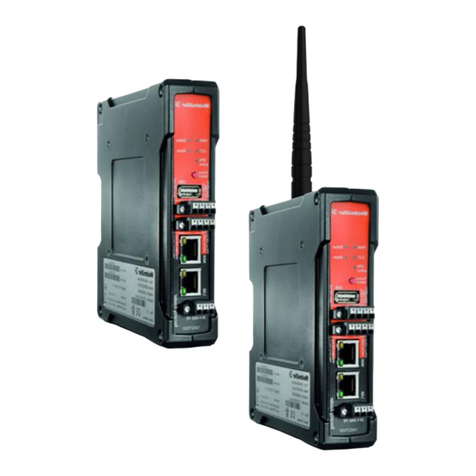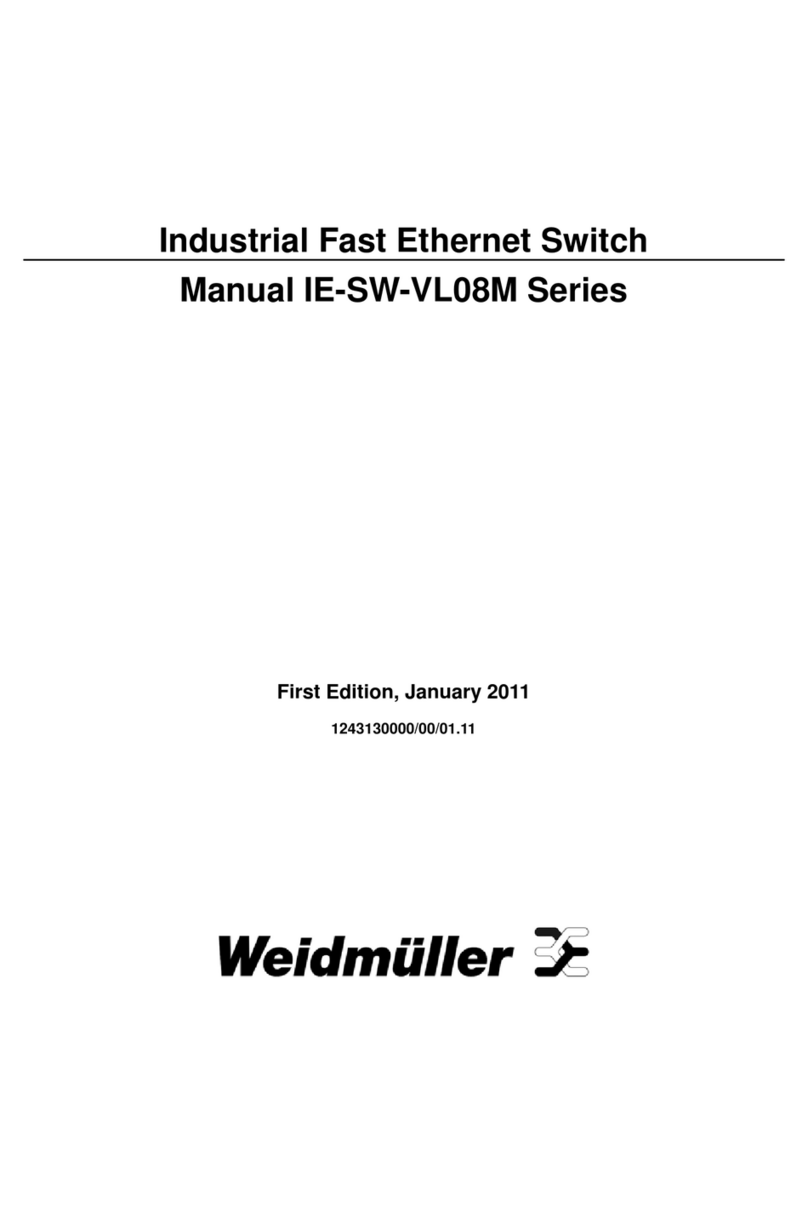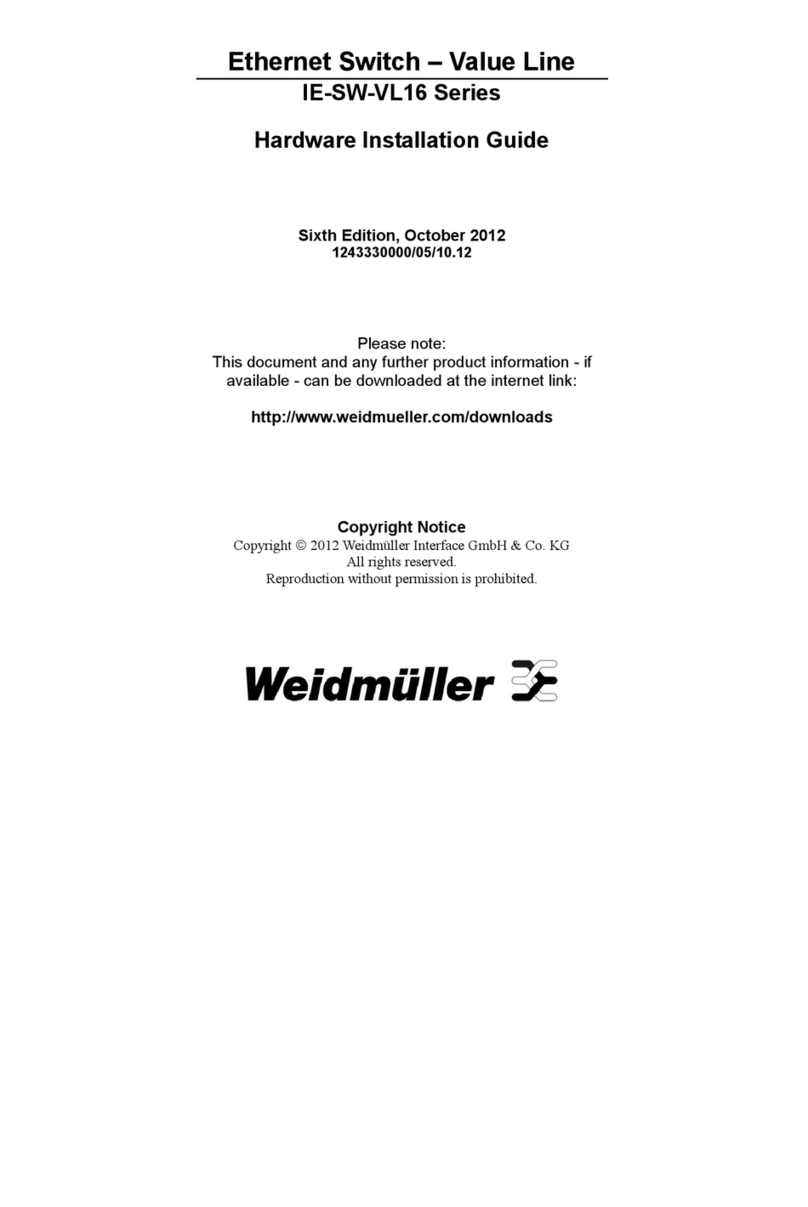Wall Mounting (optional)
For some applications, you will find it convenient to mount the device on the
wall, as illustrated below.
STEP 1:
Remove the aluminum
DIN-Rail attachment plate from
the switch’s rear panel, and then
attach the wall mount plates, as
shown in the diagram below. ⇒
top
plate
bottom
plate
STEP 2:
Mounting the device on the wall requires 4 screws. Use the
switch, with wall mount plates attached, as a guide to mark
the correct locations of the 4 screws. The heads of the
screws should be less than 6.0 mm in diameter, and the
shafts should be less than 3.5 mm in diameter, as shown in
the figure at the right.
6.0 mm
3.5 mm
NOTE Before tightening screws into the wall, make sure the screw head and
shank size are suitable by inserting the screw into one of the keyhole-
shaped apertures of the Wall Mounting Plates.
Do not screw the screws in all the way—leave about 2 mm to allow room for
sliding the wall mount panel between the wall and the screws.
STEP 3:
Once the screws are fixed in the
wall, insert the four screw heads
through the large parts of the
keyhole-shaped apertures, and then
slide the Ethernet switch
downwards, as indicated. Tighten
the four screws for added stability.
⇒
II 3G
ATEX Information
1. Certificate number DEMKO 08 ATEX 0717913X
2. Ambient range: -40°C ≤Tamb ≤+75°C
3. Certification String: EX nC nL IIC T4
4. Applicable standards: EN60079-0: 2006, EN60079-15:2005
5. The conditions of safe usage:
a. The Ethernet Communication Devices are intended for mounting in an
IP54 enclosure and used in an area of not more than pollution degree 2 as
defined by IEC60664-1
b. Conductors suitable for use in an ambient temperature of 95°C must be
used for the Power Supply Terminal.
- 5 -






